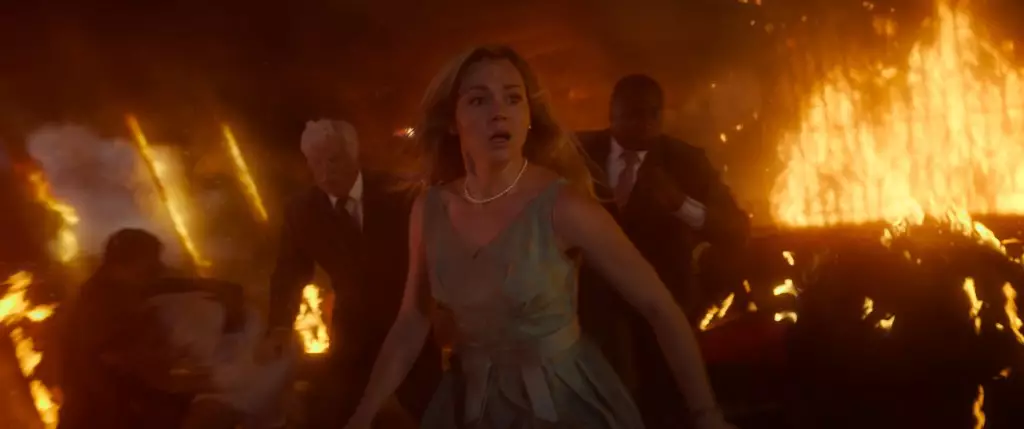In an era where horror films reign supreme, the release of “Final Destination: Bloodlines” symbolizes a watershed moment for the genre, especially for franchises that have lingered in the shadows. After a remarkable 14 years, this sequel not only revives nostalgia but paves the way for future installments. With a projected opening weekend gross between $35 million and $40 million, it’s clear that audiences are hungry for more spine-tingling terror. This film is not merely a cash grab; it heralds a return to the franchise’s roots, blending cleverly devised plots with high-stakes thrills that captivated audiences two decades ago. The fact that it appeals predominantly to women under 25 suggests that the film has transcended its traditional male-dominated fan base, opening the door for a diverse audience looking for thrills.
Record-Breaking Potential and Audience Engagement
With a global outlook of $70 million across 74 territories, the expectations from “Bloodlines” are sky-high. Historical context illustrates this film’s potential; the franchise’s previous installment, “The Final Destination,” opened at $27.4 million back in 2009. As trends in movie consumption evolve, the marketing team behind “Bloodlines” has cornered the market by seamlessly engaging younger audiences via social media platforms while capitalizing on the beloved elements of the franchise. The effectiveness of this targeted strategy is reflected in the film’s initial ratings: a staggering 93% certified fresh on Rotten Tomatoes demonstrates a strong likelihood of critical acclaim.
A Reflection of Our Collective Fears
The beauty of “Final Destination” films lies in their unique premise—escapes from death met with inevitable, bizarre mishaps. The current storyline, revolving around a college student battling violent nightmares, adapts well to the contemporary existential crisis we all face. Today’s society is enveloped in uncertainty, grappling with our own versions of ‘death’—be it from the pandemic, economic instability, or environmental crises. The film acts as a cathartic release, presenting viewers with an exaggerated portrayal of fate while allowing us to confront our collective anxieties in a safe environment. It’s a testament to how art reflects life; even in horror, there’s room for introspection and dialogue about our fears.
Industry Impact and the Evolution of Horror
While “Bloodlines” undoubtedly places “Final Destination” back on the cinematic map, it also indicates a seismic shift within the horror genre itself. Major studios like Warner Bros. continue to bet big on franchises with established audiences while simultaneously experimenting with new themes and ideas. As demonstrated by the anticipated performance of other horror-oriented films like “Sinners” and upcoming projects such as “Hurry Up Tomorrow,” the blueprint for successful horror has expanded beyond mere jump scares and gore. Instead, we see an emphasis on rich storytelling that resonates on emotional levels, further securing the genre’s place within mainstream cinema.
The Weeknd: A New Force in Film
Additionally, the emergence of talents like The Weeknd in film signifies a trend where musical icons transcend their disciplines, fusing music with cinematic storytelling. While his debut film may not achieve blockbuster status, the partnership with Lionsgate signals an economic alignment with the evolving entertainment landscape. Collaborations between established artists and major studios not only diversify narratives but are likely to attract their extensive fan bases into theaters. If executed well, it could open the doors to a new era where films are inherently multisensory experiences engaging audiences through both sight and sound.
Reevaluating Franchise Longevity
Ultimately, “Final Destination: Bloodlines” serves as a dynamic case study for film industry veterans unprepared for the changing landscape. Franchises that remain static risk extinction; this sequal disrupts previous norms by revitalizing interest and establishing new fan bases. It reinforces the idea that when a franchise evolves with the times, it can flourish while ensuring a strong financial return. As it hits theaters, audiences and critics alike will be watching closely to see if this revitalization manages to maintain its momentum, or if the metaphorical Grim Reaper of the franchise prevails once again. Whatever the outcome, “Bloodlines” stands as a remarkable testament to the intersection of fear, innovation, and nostalgic storytelling within cinema today.

